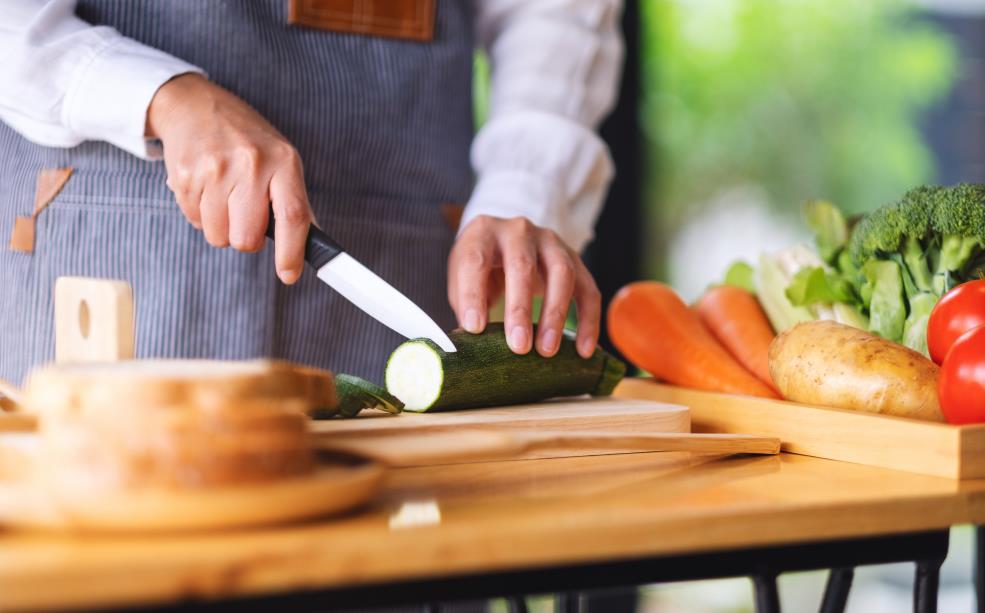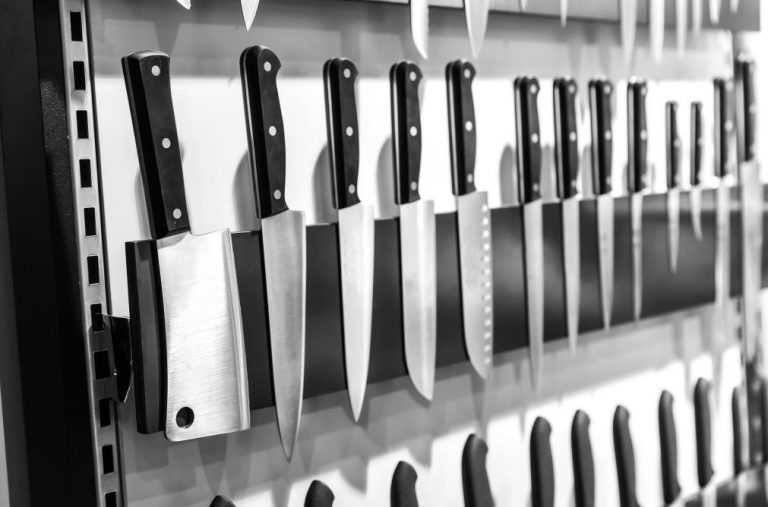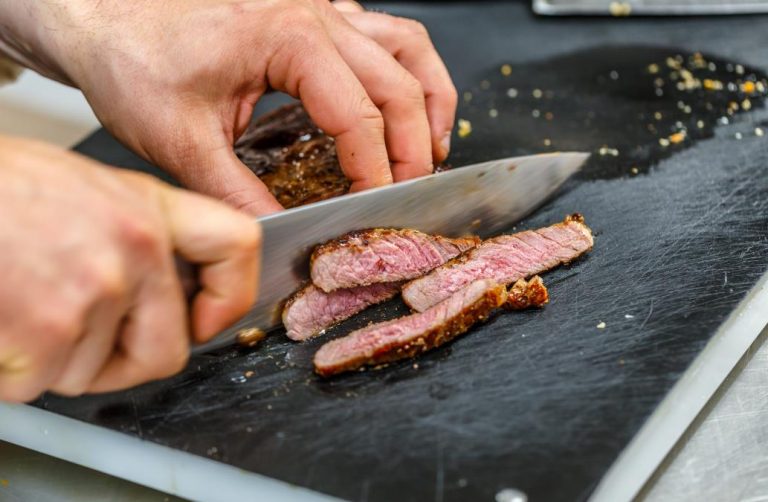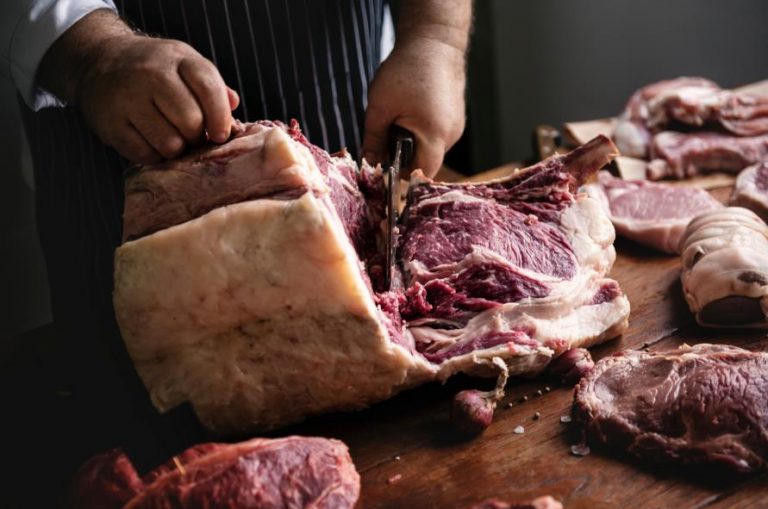The paring knife is one of the three must-have knives for chefs in their possession. When paired with a chef’s knife and a serrated blade, most cooks will have their cutting equipment complete.
The paring knife may feature an undersized blade, but it’s practical in the kitchen, on and off the cutting board. If a cook uses it just to cut small fruits and vegetables, they would be overlooking some of the very beneficial uses.
In this article, we’ll cover the primary uses of the paring knife, helping chefs tackle obstacles in their culinary needs. You can explain the uses of the paring knife to your customers, promoting it and boosting sales.
What is a paring knife?

First off, let’s identify a paring knife.
The paring knife is a petite kitchen knife with a narrow, short blade. It’s the smallest kitchen knife chefs have in their arsenal.
The paring knife follows a straight edge profile with a slight curve at the tip. Some paring knives also have what we call a bird’s beak. These paring knives are also known as tourne knives – more on this variation below.
Chefs primarily use the paring knife to cut and slice small-scale ingredients. Small fruits, veggies, seafood, nuts, and any other food appropriate for its tiny blade gives cooks an easy time on the cutting board.
Their petite size also makes them the perfect tool for precision work. Coring tomatoes, peeling apples, scoring meat, and deveining shrimp, to name a few.
The paring knife also goes beyond the cutting board. Cooks can hold the ingredient in one hand and the paring knife in the other. This utilization opens up so many use cases.
Buy Wholesale Knives and Start Scaling up with Us Today
Contact us and connect with a sales rep to get a free quote.
Sizes and design
Paring knives feature a short blade of 2 to 4 inches. This blade size shouldn’t be underestimated, however. It’s easy to control and lightweight.
At this size, you can expect a thin blade. The average thickness of paring knives is 3mm. Since this is a western styled kitchen knife, the blade is also somewhat flexible due to the steel used.
The paring knife doesn’t have a set standard for its cutting edge. Some have a broad heel for its length with a generous curve; some feature a straight edge with a stabby tip. It’s up to the user to select the one that suits their preferences.
There is also the sheep’s foot paring knives. These have a spine that angles, meeting the end. This paring knife design is an excellent tool for julienning and dicing vegetables on the cutting board.
As a knife shop, it’s best to offer differently designed paring knives to reach a wider range of customers.
Like other western kitchen knives, the paring knife often comes with a bolster. The bolster adds weight to the paring knife, but this isn’t a downside. The added weight is complementary to many cooks, making the knife sturdier and allowing cooks the operate it confidently.
Bird’s beak (tourne knife)
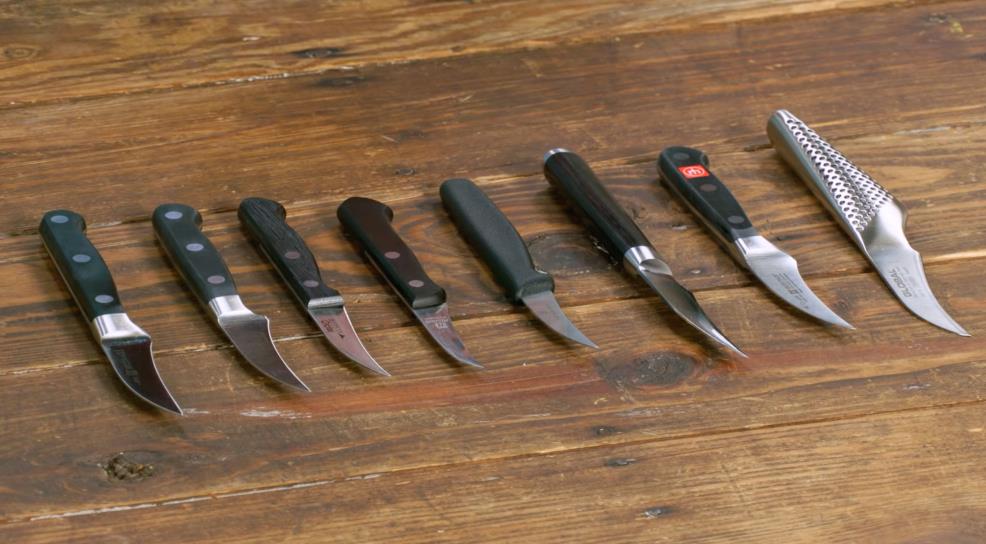
As mentioned, a selection of paring knives features a bird’s beak. These knives have a generous inward curve at the tip, resembling a bird’s beak, hence the name.
This paring knife style originates from France. The primary use of it is to turn vegetables into seven-side shapes, similar to a football, known as the tourne cut. This cutting technique is for certain French dishes requiring potatoes, carrots, turnips, and other root or dense vegetables.
The inward curve makes trimming much more manageable, helping the cook peeling rounded foods effortlessly and perfecting the tourne cut every time. Because this paring knife has specific uses, it’s not for everyone. Consider this if you plan on selling it in your store.
Paring knife features
- Short blade length at 2 to 4 inches.
- Narrow design with a pointed tip.
- Has variations – such as bird’s beak and sheep’s foot paring knives.
- A slim build with 2 to 3mm thickness.
Paring knife uses
Here is where to use a paring knife, from simple to detailed cutting needs.
Vegetables
Numerous dishes call for vegetables that are cut in a certain way. Before the cook can get to dicing, many of these vegetables must be peeled or cleaned up. For example, removing the seeds from the pepper before slicing.
The paring knife is the go-to knife for these tasks. The small blade enables the cook to accomplish these with ease. Once the vegetable is ready for slicing or dicing, it’s sufficient in length, not requiring the cook to pick up another knife.
The same applies to any other small to medium-sized vegetable; tomatoes, cucumbers, carrots, and any fresh produce appropriate for its size.
Fruits

Fruits aren’t so different from vegetables. The cooks also need to prepare them before they are ready to be cut. The paring knife is the most convenient option for peeling the skin of an apple and similar fruits.
The paring knife’s petite build enables the cook to use it in a variety of ways with fruits. Take an orange as an example. Removing the peel is so much easier using a paring knife by simply holding it in your hands and rotating the fruit.
Once the peel is gone, the paring knife offers further uses, like segmenting. Simply holding the orange in your hand and separating the sweet, juicy fruit from the chewy membrane makes eating oranges much more enjoyable.
Aside from these kinds of detailed works, the paring knife is a simple yet very effective knife to simply cut any fruit appropriate for its blade.
Meat and seafood
Why would a cook need a 10-inch chef’s knife to fillet a small fish or devein shrimp? The small and precise blade of the paring knife is perfect for these tasks.
Using the tip to lift up and pull the shrimp’s vein is straightforward and effortless with a paring knife. The same goes for carefully filleting or butterflying small fish, like anchovy, sardine, or herring.
It’s not so different when using the paring knife to cut meat. Although the cook might find themselves looking for a lengthier blade, the paring knife is perfect for cleaning up steaks and removing stubborn connective tissue.
The paring knife’s stabby tip is also excellent for carving small poultry. Cooks can use it to disjoint and break whole poultry into pieces. The narrow blade is ideal for deboning chicken thighs and small cuts of other meats.
Other uses
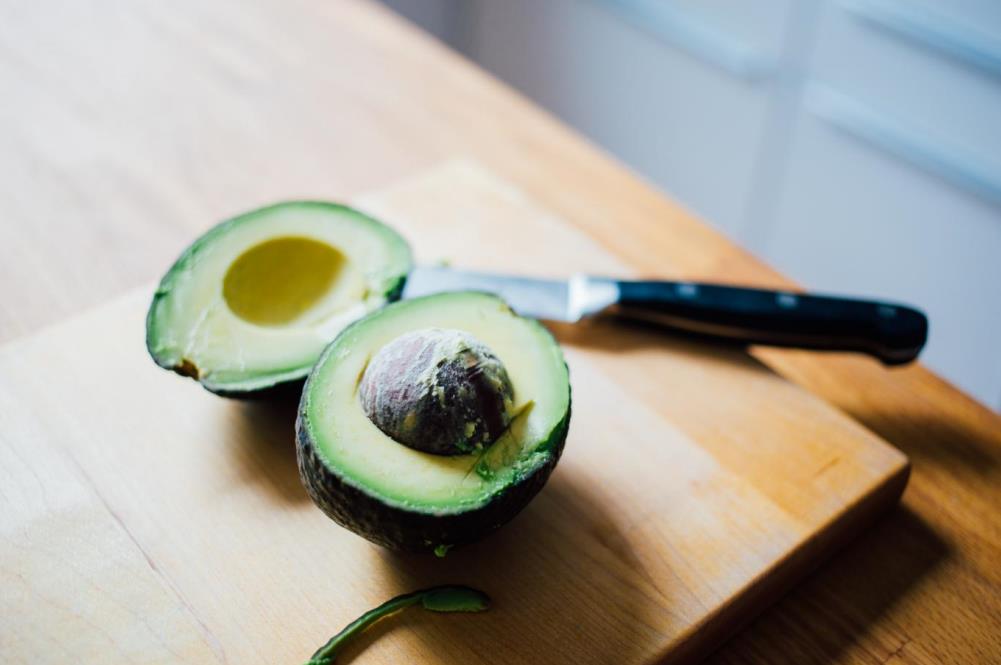
The ability to hold the ingredient in one hand and comfortably control the blade in the other makes the paring knife stand out.
Take an avocado as an example. It’s a soft fruit with a dense pit the cook needs to remove before scooping the inside with a spoon. Any kitchen knife can cut the avocado to the seed before the cook rotates the fruit to halve it.
This miniature knife distinguishes itself with its convenient use. Compared to much larger alternatives, the paring knife is more manageable and safer for novice cooks.
Any culinary need a tiny blade can be helpful calls for a paring knife. You can use it to shuck oysters, remove the meat from various shellfish, and loosen baked goods from the tray.
Paring knife vs. utility knife
The paring and utility knives have a similar design. They are two popular kitchen knives cooks should have in their collection.
The utility knife is almost always bigger than the paring knife. It can come in blade lengths ranging from 4 to 8 inches. Both knives follow a similar blade structure with a thin profile and stabby tip. However, the size and other features affect their uses greatly. Read this article comparing paring and utility knives.
Buy Wholesale Knives and Start Scaling up with Us Today
Contact us and connect with a sales rep to get a free quote.
Should you sell paring knives in your store?
Selling paring knives is a must for every knife store. When people look for a secondary blade to pair up with their chef’s knife, the paring knife is one of the first picks. Its small blade offers countless uses in a simple, convenient manner.
Unless your store specializes in specific products, like knives for butchers or only Japanese kitchen knives, having a selection of standard paring knives will lead to more sales.
Check out our kitchen knives catalog for wholesale purchases. If you have a particular knife design in mind, our OEM services can take care of that for you. We can custom-design any kitchen knife, including paring knives down to the minuscule detail. Contact us with your needs and request a quote today!
